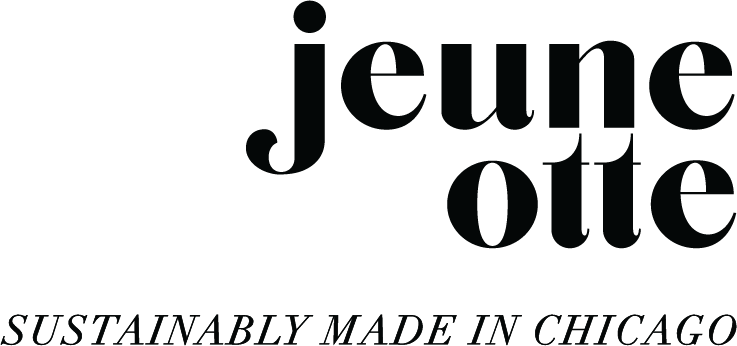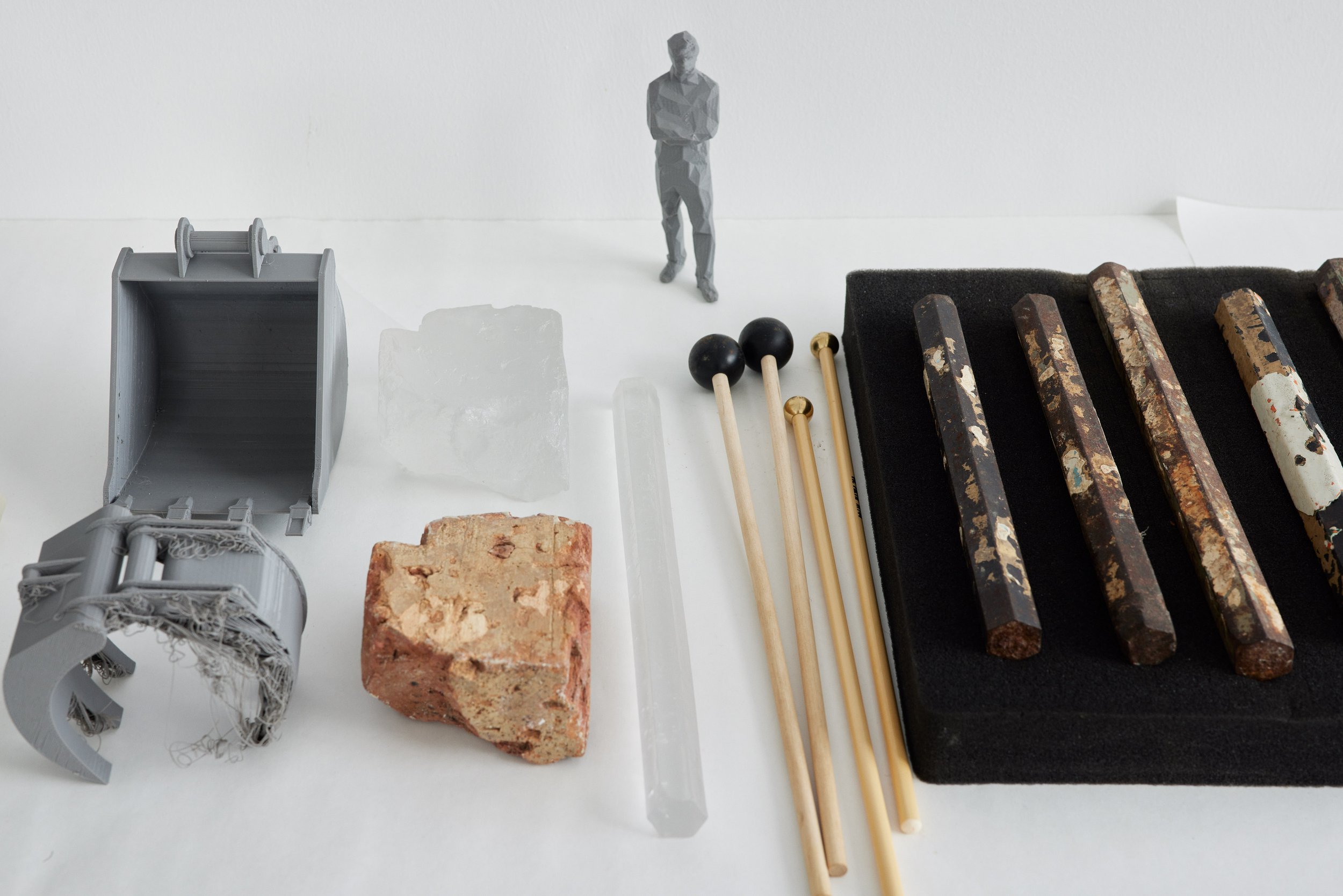Maria Gaspar
Blue skies meant perfect conditions for a dreamy spring photoshoot with artist Maria Gaspar. Inside her Chicago studio, we found Maria surrounded by countless works in progress: paintings, sculptures, photographs – even a musical instrument made from found objects. Her artwork may be varied but much of it builds upon common themes of incarceration and liberation. Read on to learn more about Maria’s work and the inspiration behind it.JEUNE OTTE: How do you describe your work?
MARIA: As an interdisciplinary artist, I make sculptures, installations, sound works, performances, public art projects, and socially engaged art. Much of my art practice addresses issues of spatial justice in order to amplify, mobilize, or divert structures of power through individual and collective gestures. For example, I’ve spent the last decade working inside and outside prisons doing multi-year projects with detainees and people who have been system-impacted. This experience has been very meaningful to me, considering how carcerality affects all our lives whether we know it or not. I am interested in making art that plays a role in how we think about liberation or the undoing of systems. JO: Can you tell us about these bars?
MARIA: Material, touch, opacity, and sound have been my latest preoccupations, and I have been exploring translucent materials lately, such as resin and glass. For my current project, I am making a sonic sculpture out of carceral debris that I acquired from a local jail while making an experimental video project. Because I have always been interested in collaboration, I am building a new work with composers and musicians that attempt to transfigure materials intended to confine into materials (and sounds) that makes us feel free. The sonic possibilities are exciting, and I look forward to presenting this new body of work soon.JO: What is on your mind right now?
MARIA: I am developing ways of more succinctly engaging music, movement, and experimentation in my practice. I’ve spent much time thinking about time and the experience of loss lately especially with the passing of someone especially dear to me, my mother. My mother played a major role in my life, and I often recall her work as a radio DJ in Chicago. I have fond memories of hearing her voice, strong and brave and imperfect. She was good at taking risks and leading with her heart. Thinking about her creative embodiments fills me with life and affirms, for me, the transformative power of art. So exploring sound and play feels so rich right now as I adapt to a new life without her. JO: Any new shows?
MARIA: I have a few exhibitions coming up, including two group shows at the Ford Foundation Gallery and the Schomburg Center for Research in Black Culture in New York City and two upcoming solo shows at El Museo Del Barrio in New York City and UC Santa Cruz Institute of the Arts and Sciences in Santa Cruz, CA. My new body of work will debut during the solo shows in May and September 2023. JO: How does fashion & clothing play a role in your life?
MARIA: Fashion and clothing are powerful tools for expression. As a young person, I composed outfits from thrift stores and made them my own. At the time, I especially enjoyed thinking about my clothing as a way of altering my identity. As an adult and parent of a toddler, I don’t have much time to think about fashion like I used to. Still, I enjoy finding unique pieces that I don’t have to think about so much but can work in any given situation, like working in my studio, attending a meeting, teaching, or grabbing drinks with a friend. Quality means a lot to me, and I appreciate the time and labor that goes into something I am wearing.JO: How does Jeune Otte stack up in that regard?
MARIA: The fabrics felt good on my body. I especially enjoyed the materials and colors that allow me to mix with other pieces I might have in my closet. The clothes have a malleability and potential, which is a fun element. You can be creative. The Reed Pants felt fresh and feminine, and I also loved pairing the Phoebe Dress with my sneakers. 











